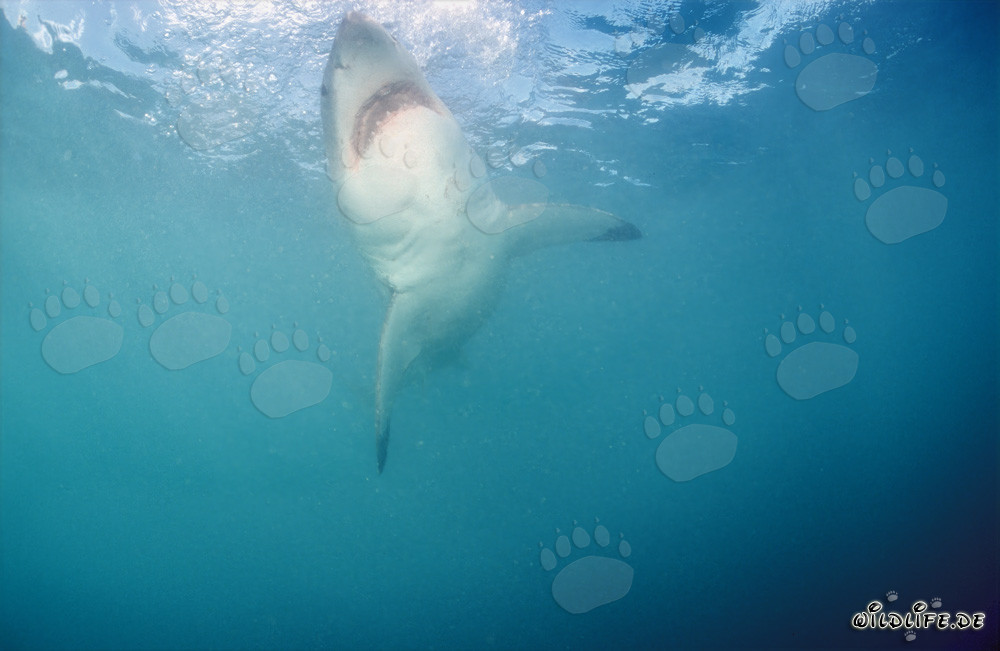A Great White Shark ascends vertically to the ocean surface after spotting prey (00010372)
Description: The Great White Shark (Carcharodon carcharias) crosses the waters near Geyser Rock and Dyer Island off the coast of South Africa. This area is home to African penguins, cormorants, and a large colony of South African fur seals. The surface hunter often finds its prey at the water's surface. The Great White Shark, with its size, strength, and fearsome jaws, poses a constant threat to the mammals in the vicinity. Belonging to the mackerel shark family, this species is characterized by large gill slits and long pectoral fins. The largest Great White Shark ever caught measured 6.4 meters in length and weighed an estimated 1500 kg. During surprise attacks from the depths, these animals accelerate so rapidly that they sometimes breach the water's surface. The jaws of the Great White Shark, with sharp triangular teeth in the upper jaw and needle-like teeth in the lower jaw, are notorious and feared. The movable upper jaw allows the shark to catch large prey. The Great White Shark plays a crucial role in maintaining the ecological balance in the ocean, although much about its behavior and habitat remains unknown. Despite its long-standing adaptation, human activities pose a threat to the Great White Shark.
Location: Western Cape, Gansbaai/Dyer Island, South Africa
Date of Capture: 10.07.2002

